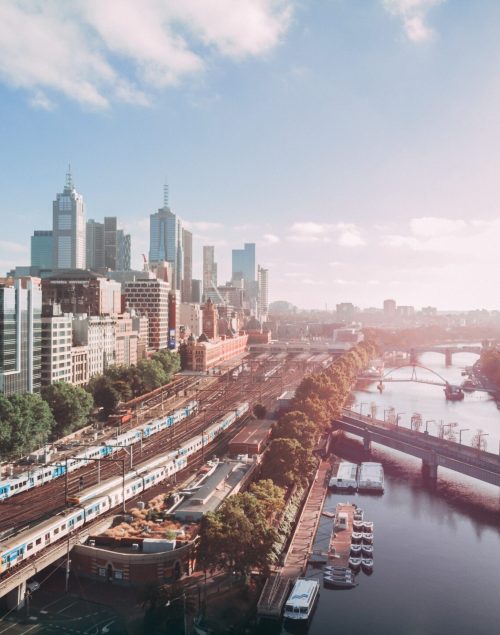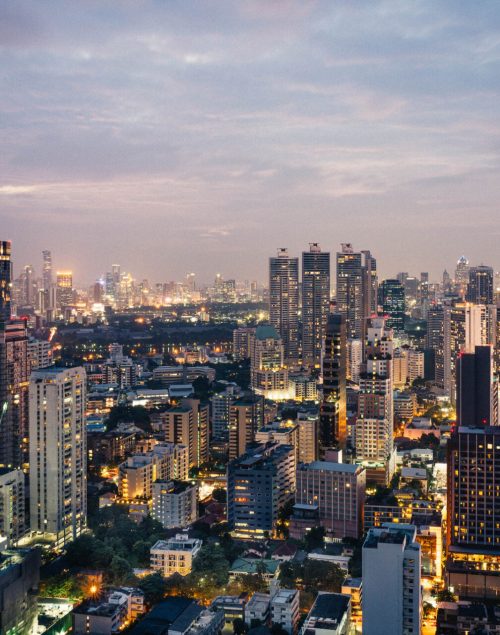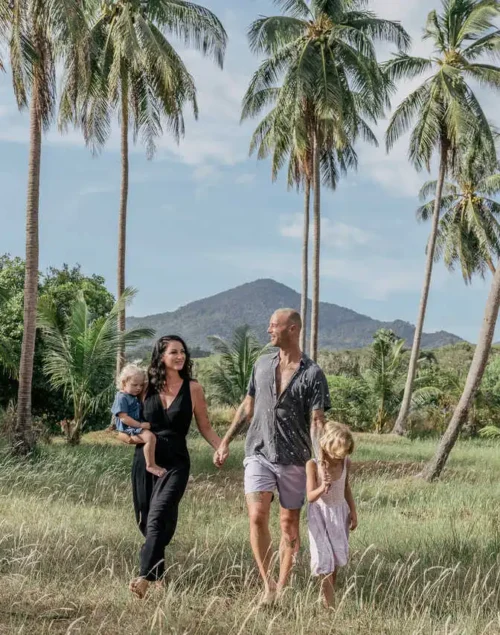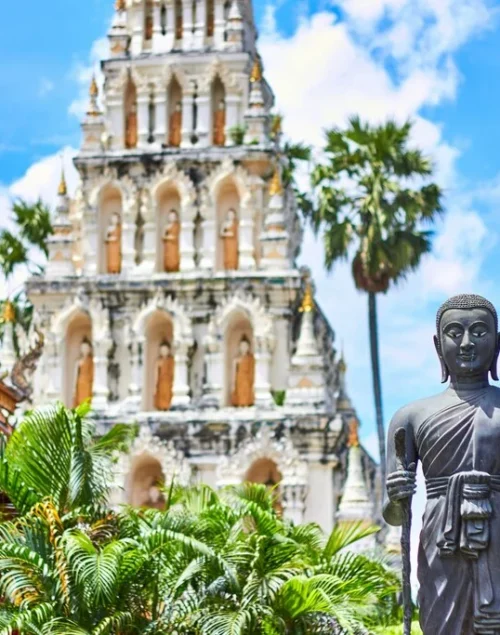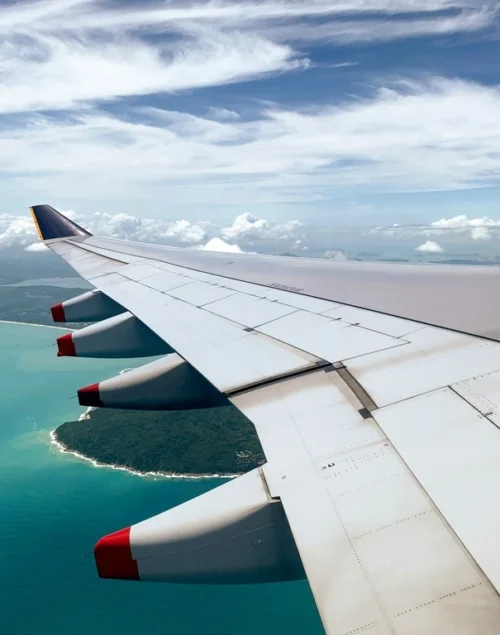Digital nomad families are not like typical travelers. They tend to spend several months in one place, creating a temporary home and building a real life there. They have much higher expectations because they’re not just looking for a quick couple’s getaway—they need a destination for digital nomad families that can serve as a safe and comfortable home for the whole family.
The digital nomad lifestyle thrives on essential factors like visa options, climate, reliable infrastructure, a supportive community, affordable cost of living, and family-friendly activities.
In this blog post, I’ll show you the best digital nomad family destinations to help you decide where your next adventure will take you!
The Best Destinations for Digital Nomad Families
1. Koh Phangan, Thailand
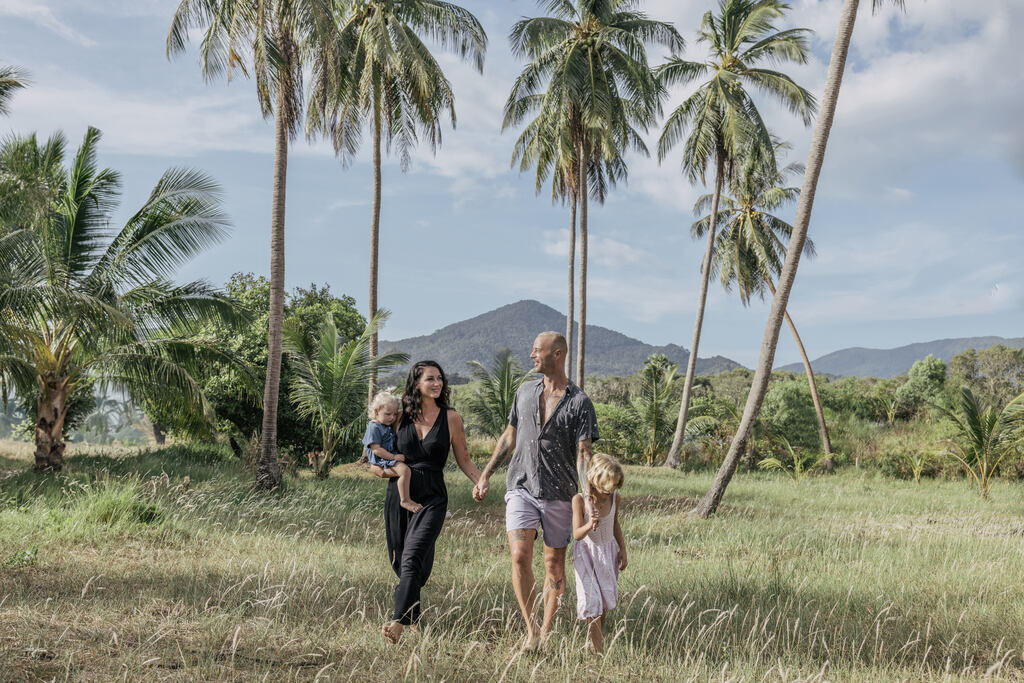
- Location: Koh Phangan is in the Gulf of Thailand, about 12 km north of Koh Samui.
- Population: Around 13,000 residents, though this number rises with tourism.
- Infrastructure: The island has basic infrastructure, including roads, schools, hospitals, and reliable Wi-Fi. It’s a popular digital nomad spot.
- Languages spoken: Thai is the primary language, but English is widely spoken thanks to the tourism industry.
What makes it special?
Koh Phangan is known for its relaxed vibe and stunning beaches. It’s perfect for families wanting to unwind by the sea or explore the island’s lush, hilly interior. Half the island is a national park, keeping it wild and natural.
While the Full Moon Party draws crowds, the island is otherwise peaceful, with plenty of meditation retreats, nature-based activities and many like-minded families. Koh Phangan stands out as a leading digital nomad family destination in Southeast Asia.
Find my guide on the best kids activities in Koh Phangan here.
How safe is Koh Phangan?
Koh Phangan is generally safe, especially outside of Full Moon Party season, when you might need to be cautious of petty crime. Violent crime is rare, but road safety can be an issue due to narrow roads and inexperienced motorbike drivers. Be mindful of potential scams related to motorbike rentals and tourism activities. Medical facilities are good for basic care.
Cost of Living in Koh Phangan
A digital nomad family can live on Koh Phangan for $2,500 to $4,500 per month. Our cost of living in Koh Phangan is much higher, though; you can see all of our expenses in this article. Rent for a simple Thai house typically ranges from $800 to $1,500, and utilities remain affordable. Eating out is cheap, with local meals costing $2–$4, while Western restaurants are pricier.
Education in Koh Phangan
Koh Phangan offers a few great international school options for expat and digital nomad families. The standout is Si Ri Panya International School, which follows the British curriculum for children aged 5 to 16. Compared to other places in Thailand, tuition fees are very affordable.
Find my guide with all international schools in Koh Phangan here. And here’s my list of all international kindergartens on the island.
Visa Options
For families planning a long stay, Thailand offers several visa options. The Non-Immigrant O Visa is ideal for families staying for longer periods, allowing up to 90 days per entry with an extension option. The Tourist Visa grants 60 days with a possible 30-day extension. Thailand’s Long-Term Resident Visa (LTR), aimed at digital nomads, allows 5-year stays. You can also apply for a dependent visa if your child attends a licensed school and gets a student (ED) visa. For more details, visit thaievisa.go.th.
2. Chiang Mai, Thailand
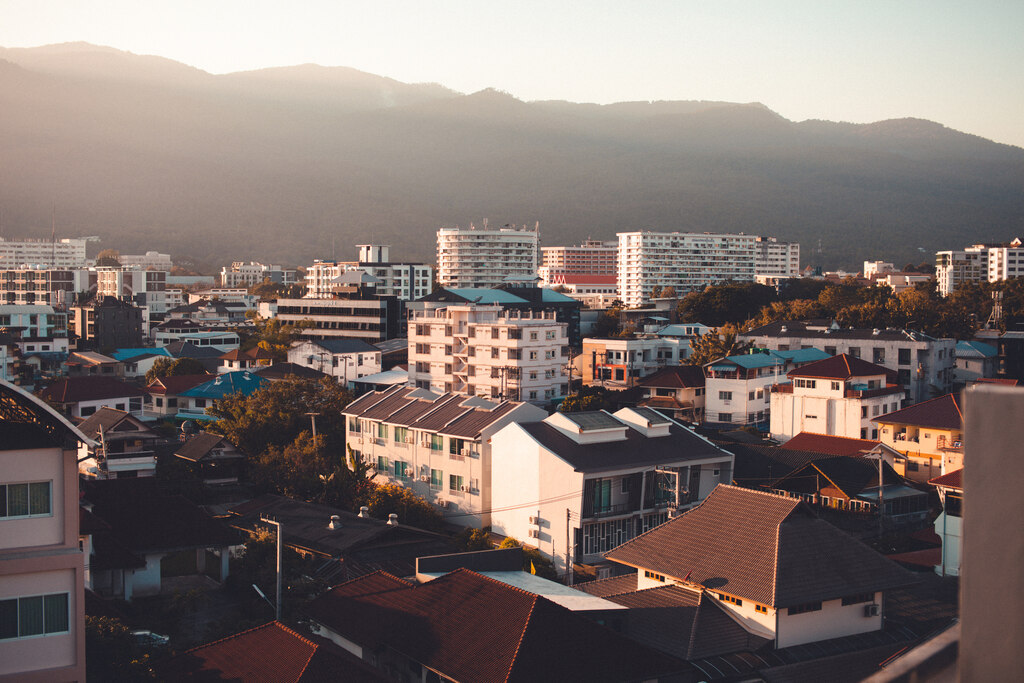
- Location: Chiang Mai is in Northern Thailand, about 700 km north of Bangkok.
- Population: Roughly 130,000 residents in the city, with over a million in the greater metropolitan area.
- Infrastructure: Chiang Mai has a well-developed infrastructure with hospitals, schools, co-working spaces, shopping malls, and reliable public transportation.
- Languages spoken: Thai is the primary language, but English is commonly spoken in tourist areas and by the expat community.
What makes it special?
Chiang Mai is a beautiful blend of ancient temples and modern city life. The cooler winter months (15-28°C) are very refreshing, and the city is famous for its cultural festivals, such as Loy Krathong. The relaxed pace of life, strong sense of local culture, local markets, and outdoor activities nearby make it a perfect digital nomad family destination.
I’ve put together a list of our favorite family activities in Chiang Mai right here.
How safe is Chiang Mai?
Chiang Mai is considered one of Thailand’s safest cities. Violent crime is very rare, and the city is welcoming to expats and tourists. Road accidents, especially involving scooters, and petty theft in crowded areas are the biggest concerns. The healthcare system is excellent, with many top-notch private hospitals available.
Cost of Living in Chiang Mai
Families typically spend between $2,500 and $3,500 per month. Renting a simple 2-bedroom house or apartment ranges from $600 to $1,200, and living expenses like food and transportation are also affordable. Groceries for a family of four can cost around $300 per month.
Education in Chiang Mai
There are many highly regarded international schools in Chiang Mai. Schools like Lanna International School and Chiang Mai International School follow the British or American curriculum. Tuition fees are moderate compared to Bangkok, and options range from preschool to high school, with many schools offering bilingual education in Thai and English.
Visa Options
Chiang Mai offers similar visa options to Koh Phangan, including the Non-Immigrant O Visa for families. The Thailand Elite Visa is also available, offering longer, multiple-entry stays of 5 to 20 years and is ideal for families wanting hassle-free long-term residence. We opted for this visa and absolutely love it! For more details, visit thailandprivilege.co.th.
3. Bali, Indonesia
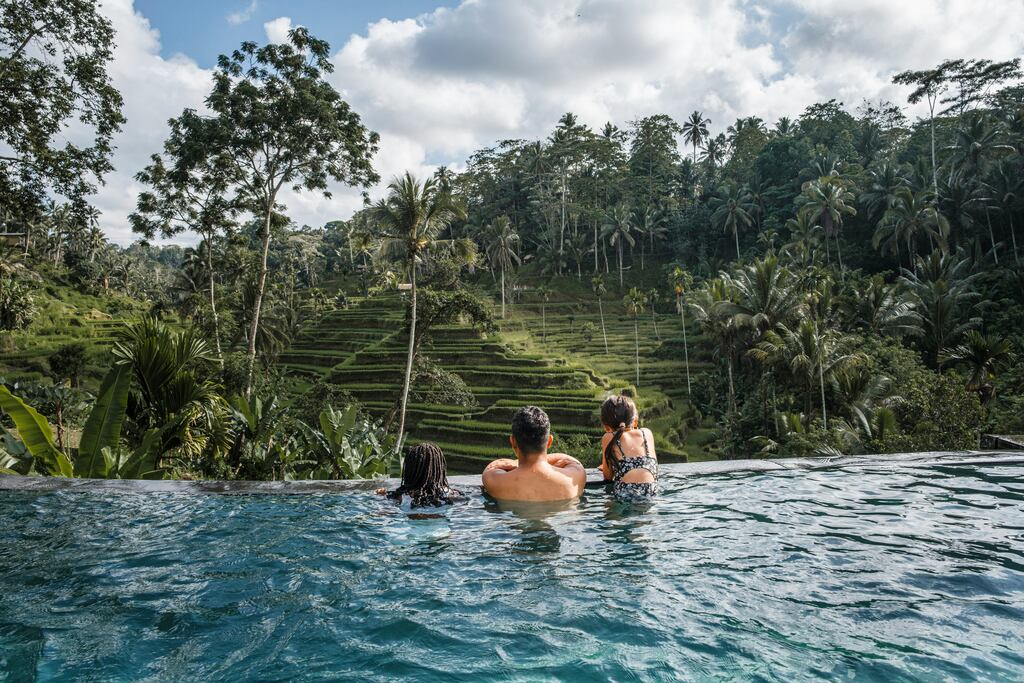
- Location: Bali is an Indonesian island in the Lesser Sunda Islands, east of Java.
- Population: Around 4.3 million people.
- Infrastructure: Bali’s infrastructure is a mix of modern and traditional, with an international airport, hospitals, schools, and co-working spaces. Traffic can be extremely heavy, especially in tourist hotspots.
- Languages spoken: Balinese and Indonesian are the main languages, but English is widely spoken in tourist areas.
What makes it special?
Bali is an amazing destination for digital nomad families. Its charm lies in its blend of beaches, rice terraces, and cultural traditions. The warm, tropical weather (27°C year-round) and dry season from May to September are ideal for families to explore temples, waterfalls, and surfing spots.
Here’s what it was like for us to live in Bali for three months as a family of four.
How safe is Bali?
Bali is family-friendly but like any tourist destination, petty crime, especially pickpocketing, can be an issue in busy areas. The biggest concern is traffic safety, particularly for motorbike riders. However, Bali has a solid healthcare system and a strong expat and digital nomad community.
Cost of Living in Bali
For a family, Bali’s cost of living ranges from $2,500 to $5,500 per month. Renting a villa can cost $1,500 to $3,500 per month, depending on the location. Here’s a breakdown of our monthly cost of living in Ubud and Canggu.
Local warungs (small restaurants) serve traditional dishes like nasi goreng for $2–$4, while Western dining can cost $10–$20 per meal.
Education in Bali
Expat families in Bali can choose from several international schools, including the renowned Green School, which offers an eco-friendly curriculum. Canggu Community School is another option, following the British curriculum. These schools provide education from early years through high school, with tuition costs varying depending on the school.
Visa Options
We chose the B211 single-entry visa for our stay in Bali. It starts with 60 days and can be extended twice for a total of 180 days. Families can also apply for a KITAS (temporary stay permit). For more details, visit imigrasi.go.id.
4. Lisbon, Portugal
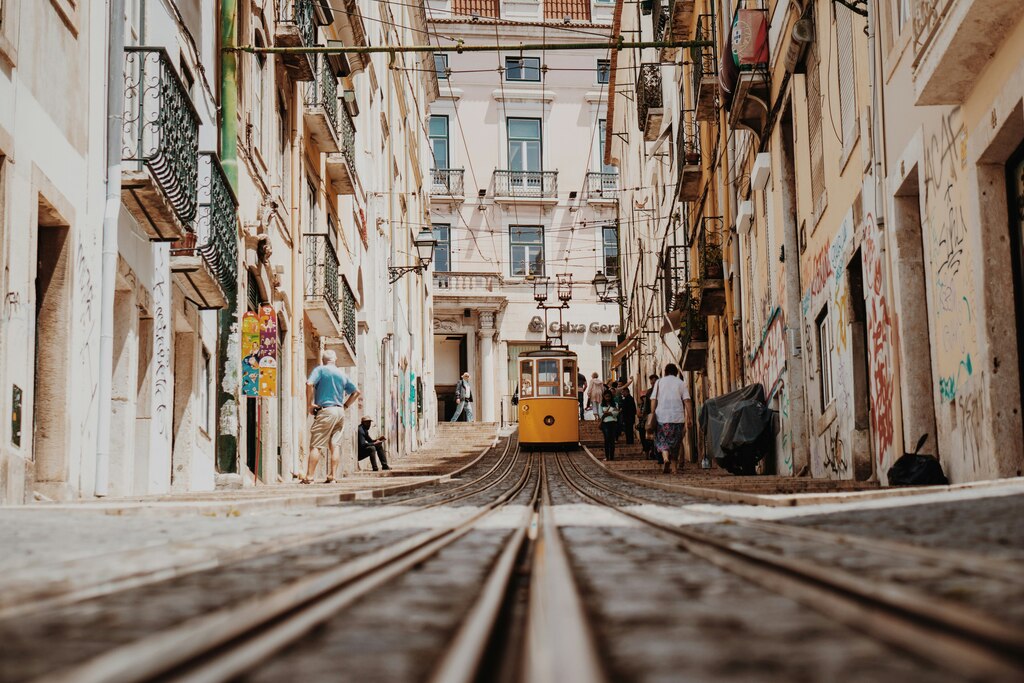
- Location: Lisbon is the capital city of Portugal, on the Atlantic coast of the Iberian Peninsula.
- Population: About 550,000 residents, with around 2.8 million in the metro area.
- Infrastructure: Lisbon has a modern transport system, hospitals, co-working spaces, and an international airport.
- Languages spoken: Portuguese is the main language, but English is widely spoken, especially in tourist areas.
What makes it special?
Lisbon offers over 300 days of sunshine each year. It’s a nice blend of historic charm, with its cobblestone streets, and modern living, with parks, cafes, and easy access to the beach. For those considering Europe as their next digital nomad family destination, Lisbon ranks high on the list.
How safe is Lisbon?
Lisbon is one of the safest cities in Europe. Violent crime is rare, but like in many cities, petty crime such as pickpocketing can happen in busy tourist areas. The healthcare system is top-notch, and the city is very family-friendly.
Cost of Living in Lisbon
Families can expect to spend between $4,000 and $7,000 per month in Lisbon. Renting a family-sized apartment costs between $1,500 and $3,000, with additional expenses like childcare and groceries.
Eating out in Lisbon can range from $10–$20 at a mid-range restaurant. Groceries are more expensive than in Southeast Asia, and families should budget around $500 per month for groceries.
Education in Lisbon
International schools like Carlucci American International School and United Lisbon International School serve the expat community. They offer English curricula and cater to a wide range of ages. Portuguese public schools are also an option for families who want their older kids to integrate into local life.
Visa Options
Portugal’s D7 Visa is ideal for families with independent income, offering residency and access to public services. The Digital Nomad Visa is a great option for remote workers. For more details, visit getgoldenvisa.com.
5. Tbilisi, Georgia
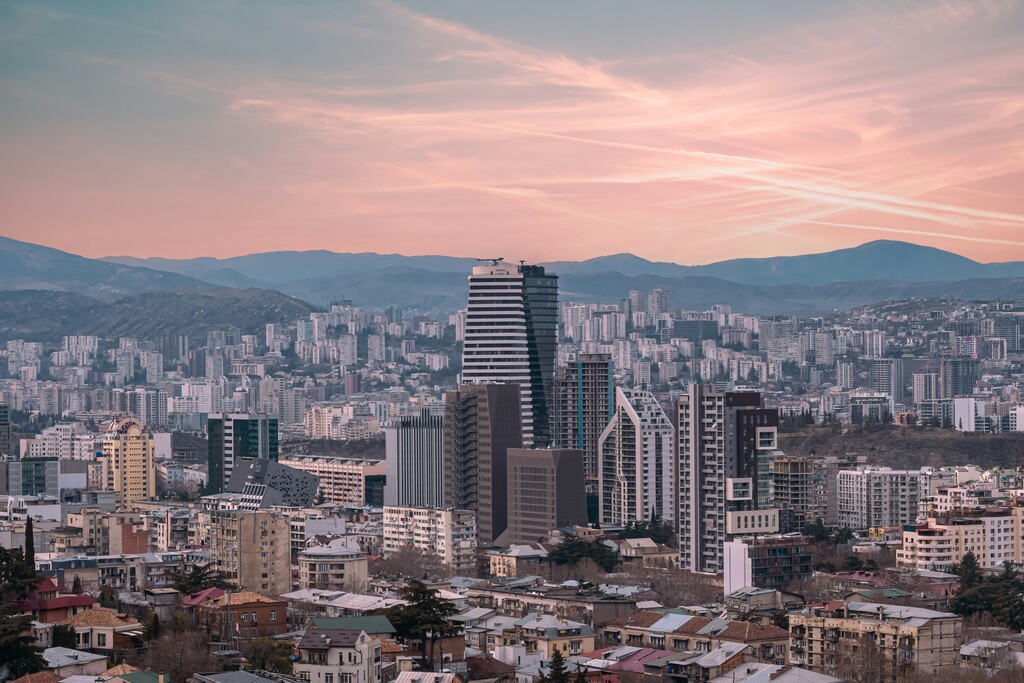
- Location: Tbilisi is the capital of Georgia, located along the Kura River.
- Population: About 1.2 million residents.
- Infrastructure: Tbilisi’s infrastructure is modern, with co-working spaces, public transport, hospitals, and an international airport. Wi-Fi is reliable and widely available.
- Languages spoken: Georgian is the primary language, but English is commonly spoken in tourist areas.
What makes it special?
Tbilisi is such a gem! It’s a super affordable digital nomad family destination with a really welcoming vibe, perfect for families wanting to explore Eastern Europe. The city is known for its warm hospitality and beautiful old town. The weather is great for exploring, with hot summers and mild winters.
Georgia is also renowned for its numerous ski resorts, offering some of the best winter sports experiences in the region.
How safe is Tbilisi?
Tbilisi is very safe and has a low crime rate. Violent crime is rare, and petty crime like pickpocketing is the biggest concern in busy areas. Health care is improving, with private hospitals offering better services.
Cost of Living in Tbilisi
A family’s living costs in Tbilisi range from $2,800 to $4,500 per month. Rent for a large apartment is around $1,200 to $2,500. Traditional Georgian food is very affordable, with meals costing around $5–$7 at local restaurants.
Education in Tbilisi
Tbilisi has several international schools like QSI International School and British-Georgian Academy, offering British or American curricula. These schools are a popular choice among expats.
Visa Options
Georgia’s visa-free entry policy allows citizens from many countries to stay for up to a year. Families can also apply for residency permits for longer stays. Check eligibility and apply at geoconsul.gov.ge.
6. Mexico City, Mexico
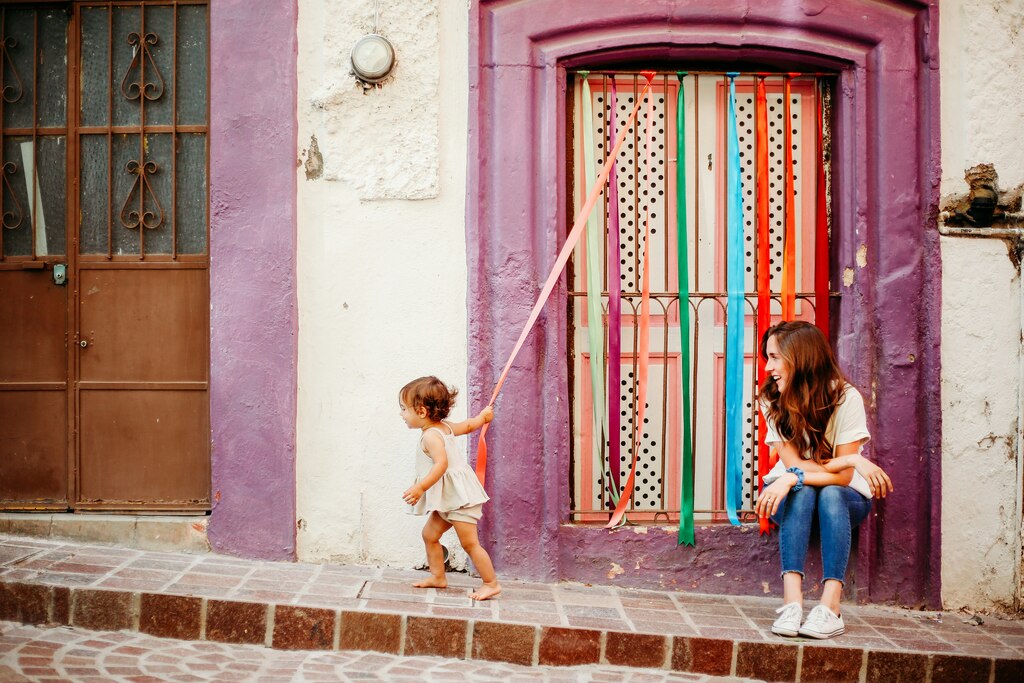
- Location: Mexico City, the vibrant capital of Mexico, sits in the Valley of Mexico at an altitude of around 2,240 meters.
- Population: The city is home to about 9.2 million people, but the entire metropolitan area boasts over 21 million.
- Infrastructure: Mexico City has a well-developed infrastructure, including a metro system, international airport, hospitals, schools, universities, and plenty of co-working spaces. That said, traffic can be a challenge at times.
- Languages spoken: Spanish is the main language, but English is widely understood, especially in tourist spots and among the younger generation.
What makes it special?
Mexico City is full of life and excitement, making it an amazing destination for digital nomad families who love culture and history. Plus, the affordable living and strong community make it an awesome choice for exploring Central America.
The city’s high altitude gives it a nice, mild climate, with temperatures hovering around 64.4°F. The food scene is legendary, and you can easily lose yourself wandering through markets, parks, and street food stalls.
How safe is Mexico City?
The city does have a higher crime rate compared to other places, with a crime index of around 60. Pickpocketing and scams are common in busy areas, but violent crime is more frequent in neighborhoods less popular with tourists.
Expats and digital nomads often choose safer neighborhoods like Roma and Condesa. On the plus side, Mexico City offers top-notch healthcare, especially in its private hospitals.
Cost of Living in Mexico City
Families can expect to spend $2,500 to $4,000 per month. Rent in family-friendly areas ranges from $1,200 to $2,000. Dining out is very affordable, with local meals costing $5–$10 per person. Groceries for a family typically cost around $400 per month.
Education in Mexico City
Mexico City is home to several top-tier international schools, such as the American School Foundation and Peterson Schools. These schools provide a high-quality education from early childhood through high school, with bilingual instruction in both English and Spanish.
Visa Options
For families moving to Mexico, the Temporary Resident Visa allows you to stay for up to four years and can be renewed. This visa also serves as a pathway to permanent residency.
For digital nomads, Mexico is developing new visa options to allow people who do remote work to stay longer. For more details, visit www.inm.gob.mx.
7. Valencia, Spain
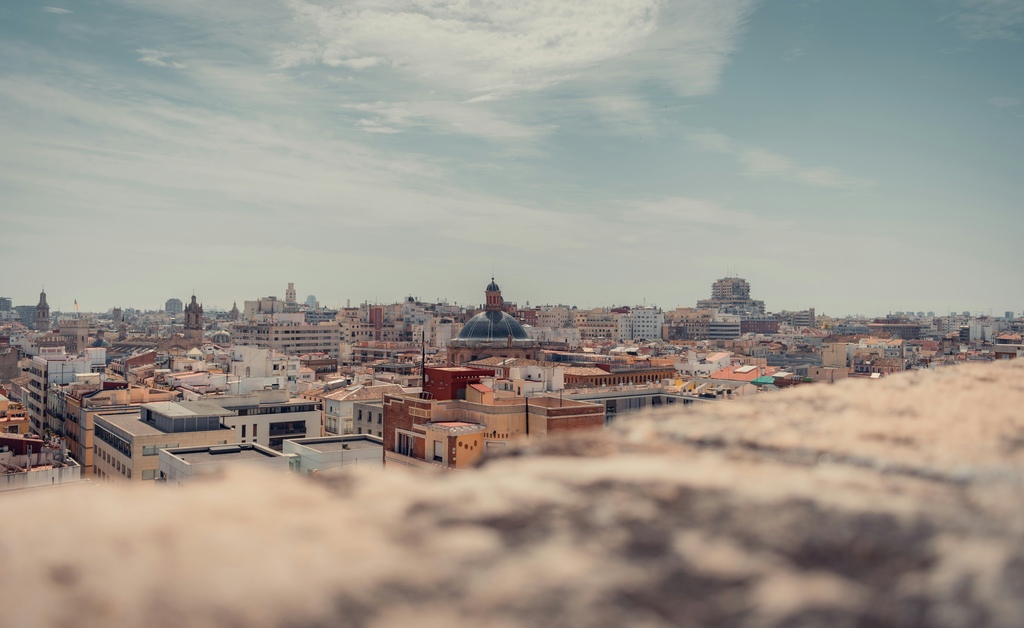
- Location: Valencia is situated on Spain’s eastern coast, right by the Mediterranean Sea.
- Population: The city has about 800,000 residents, with around 1.5 million people living in the greater metropolitan area.
- Infrastructure: Valencia has a modern infrastructure, including well-connected public transport (metro, buses, and trams), an international airport, hospitals, universities, and a growing number of co-working spaces.
- Languages spoken: Spanish (Castilian) and Valencian (a dialect of Catalan) are the main languages spoken, but English is commonly used in tourist and expat areas.
What makes it special?
Valencia is famous for its sunshine, enjoying about 300 sunny days a year. With the beach just minutes away from the city center, it’s easy to switch from city life to beach relaxation. The mix of old and new is impressive too—think historic sites like the Silk Exchange right next to modern marvels like the City of Arts and Sciences.
If your family loves sunshine and outdoor adventures, Valencia is an amazing digital nomad family destination you don’t want to miss.
How safe is Valencia?
Valencia has a high safety index with very low violent crime. Like many tourist hotspots, petty theft can happen in crowded areas. The city offers excellent healthcare and public transportation.
Cost of Living in Valencia
Families typically spend between $4,500 and $7,000 per month. Rent for a family-sized apartment ranges from $1,800 to $3,500. Paella and other Spanish dishes cost $10–$15 at local restaurants.
Groceries for a family can range from $400 to $500 per month, with fresh produce readily available at local markets.
Education in Valencia
Valencia has several bilingual and international schools, including English School Los Olivos the British School of Valencia. These schools follow the UK or Spanish education systems and offer instruction in both Spanish and English, serving children of all ages.
Visa Options
Families moving to Spain can apply for the Non-Lucrative Visa, which is perfect for those non-EU citizens with financial independence. This visa grants residency without requiring local employment. Spain’s Digital Nomad Visa is also available for remote workers. For more details, visit www.exteriores.gob.es.
8. Cape Town, South Africa
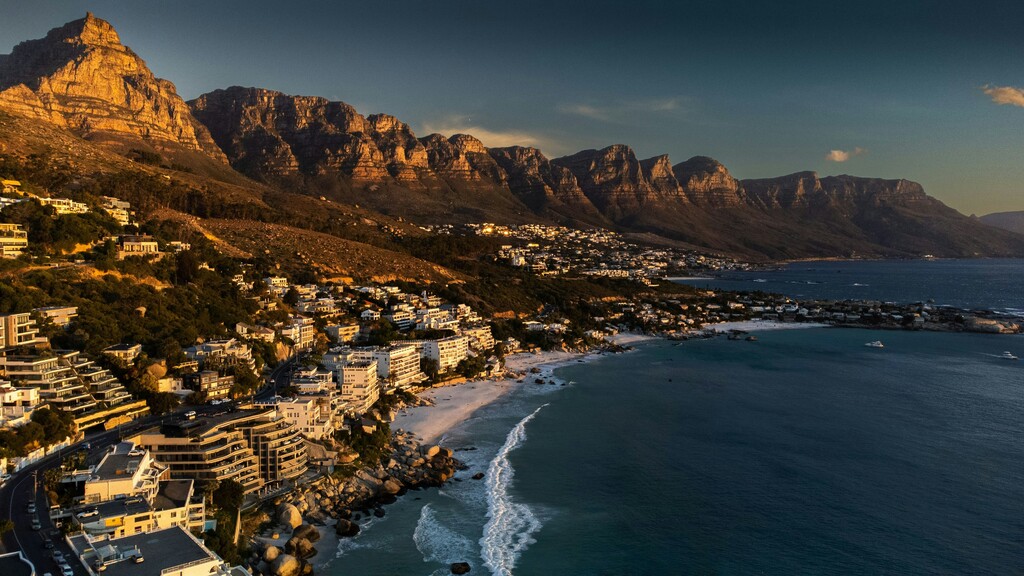
- Location: Cape Town lies on South Africa’s southwest coast, near the iconic Cape of Good Hope, where the Atlantic and Indian Oceans meet.
- Population: The city has around 4.8 million people living in the metropolitan area.
- Infrastructure: Cape Town offers modern infrastructure, including an international airport, hospitals, universities, and public transport (buses and taxis), along with a growing number of co-working spaces. However, traffic congestion and occasional power outages can be frustrating.
- Languages spoken: English, Afrikaans, and Xhosa are the main languages, with English being widely spoken.
What makes it special?
Cape Town has a bit of everything—mountains, beaches, and vibrant city life. You can hike up Table Mountain and relax at the beach all in the same day. The weather is warm in the summer and mild for the rest of the year. The cultural diversity is amazing, with influences from African, Dutch, and British traditions.
Cape Town’s endless family-friendly nature activities make it a standout digital nomad family destination in Africa. So far, we’ve only visited before becoming parents, but we’re already planning our next trip with our two girls!
How safe is Cape Town?
Crime rates in Cape Town can be high, particularly in certain areas, but tourist and expat-friendly neighborhoods are generally safer, especially with some precautions.
Gated communities and private security are common in wealthier areas. Private healthcare is excellent in the city. When I was six months pregnant with my first daughter Lila, I visited a private doctor in Cape Town. The experience was so warm, professional, and memorable that it left a lasting impression on me.
Cost of Living in Cape Town
For families, the cost of living ranges from $4,000 to $6,500 per month. Rent for a family home in safe, expat-friendly neighborhoods is between $1,500 and $3,500.
Eating out at local restaurants is affordable, with meals costing around $7–$15. Groceries for a family typically cost $400 to $600 per month.
Education in Cape Town
Cape Town is home to several well-regarded international schools, such as the American International School of Cape Town and the International School of Cape Town. Both schools follow British or American curricula and offer high-quality education.
Visa Options
South Africa offers the Temporary Residence Permit for families, and the Retired Person’s Visa is popular among those with financial means. The Relatives Visa allows close family members to live together for longer stays. For more information, visit www.dha.gov.za.
9. Medellín, Colombia
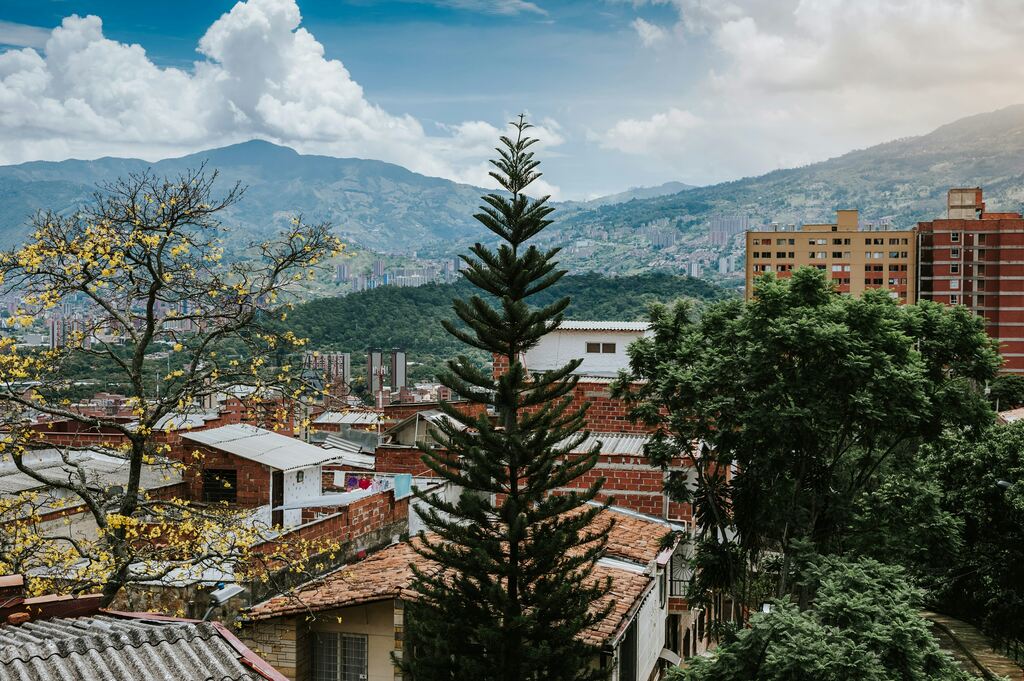
- Location: Medellín sits in the Aburrá Valley of the Andes Mountains in northwestern Colombia.
- Population: The metropolitan area is home to about 2.6 million people.
- Infrastructure: Medellín has excellent infrastructure, including Colombia’s only metro system, an international airport, hospitals, universities, and plenty of co-working spaces.
- Languages spoken: Spanish is the primary language, but English is becoming more common, especially among younger people.
What makes it special?
Medellín is often called the “City of Eternal Spring” because of its pleasant year-round temperatures, which stay between 64°F and 82°F. It’s a green city with parks and mountains nearby, offering a great mix of city life and outdoor spaces.
How safe is Medellín?
Safety in Medellín has improved significantly over the years, though petty crime like pickpocketing still occurs in busy areas. Tourist-friendly neighborhoods like El Poblado are safer, and the city’s growing expat community enjoys good healthcare services. Just be sure to stay aware of your surroundings.
Cost of Living in Medellín
Families spend about $2,500 to $4,500 per month in Medellín. Rent in safe neighborhoods like El Poblado ranges from $800 to $2,000. Colombian food is cheap, with local meals costing $5–$10 at restaurants. Groceries are similarly affordable, costing about $300–$400 per month for a family.
Education in Medellín
Medellín has several international schools, including The Columbus School and Montessori British School, which follow American and British curricula. These schools offer bilingual education and are highly recommended by expats.
Visa Options
Families can apply for the M Visa, which is valid for up to three years and covers various needs like work and entire family reunification. Colombia also offers a Digital Nomad Visa for remote workers. For more information, visit www.cancilleria.gov.co.
10. Auckland, New Zealand
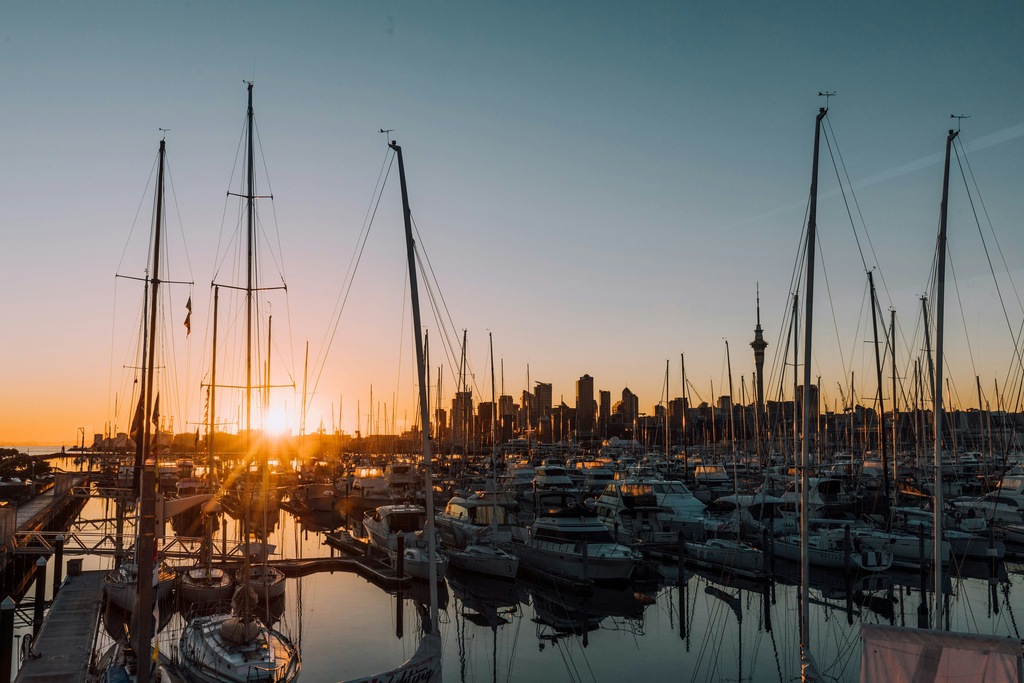
- Location: Auckland is located on New Zealand’s North Island, between the Hauraki Gulf and Waitematā Harbour.
- Population: The largest city in New Zealand, Auckland’s metropolitan area is home to around 1.7 million people.
- Infrastructure: Auckland has excellent infrastructure, including an international airport, hospitals, universities, public transport (buses, trains, ferries), and an increasing number of co-working spaces. Traffic congestion can be an issue.
- Languages spoken: English is the primary language, with Māori and New Zealand Sign Language also recognized as official languages.
What makes it special?
Auckland is surrounded by water, with beaches and islands all around. It’s a laid-back city where you can enjoy parks, outdoor activities, and the many harbors. The weather is mild, and people here love to get outside, whether for hiking, sailing, or just exploring.
How safe is Auckland?
Auckland is one of the safest cities in the world, with low crime rates and a very high quality of life. Petty crime is rare.
Cost of Living in Auckland
A family living in Auckland can expect to spend between $6,000 and $8,500 per month. Rent for a family home costs between $2,500 and $4,000.
Dining out is also expensive, with meals costing $15–$25 per person. Groceries for a family typically cost $600 to $800 per month.
Education in Auckland
Auckland’s public and private schools are highly respected. Public schools are free for residents, and international options like ACG Parnell College and Diocesan School for Girls offer British and International Baccalaureate (IB) programs.
The New Zealand education system is ranked among the best in the world.
Visa Options
New Zealand offers the Essential Skills Work Visa, allowing families to join a working family member in the country. The Investor Visa is an option for those with significant financial means. For more information, visit www.immigration.govt.nz.
11. Tenerife, Spain
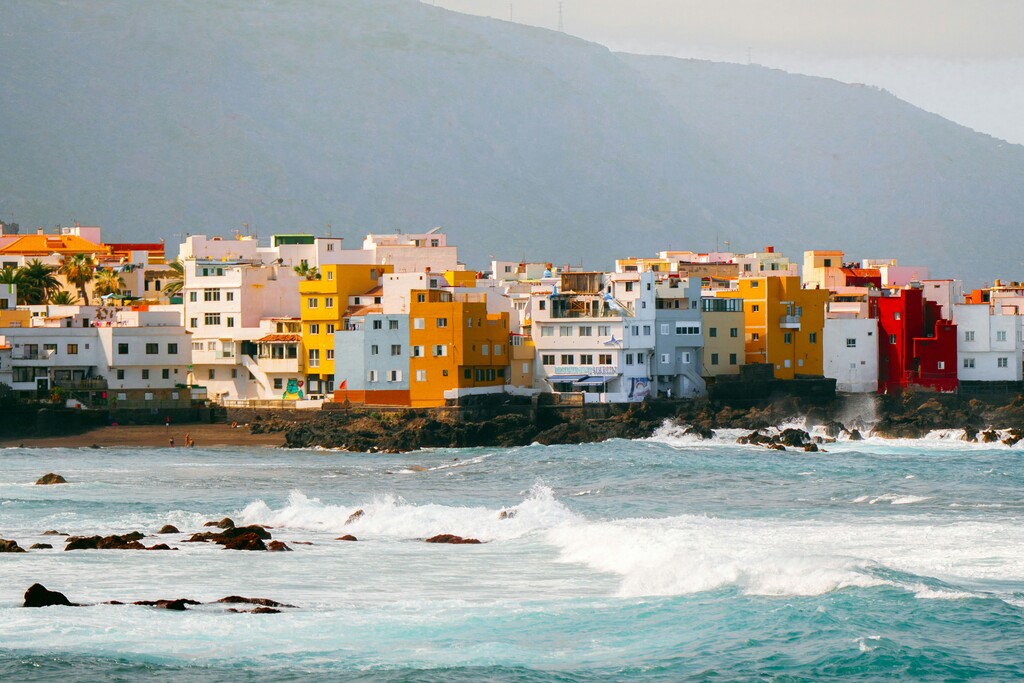
- Location: Tenerife is the largest of Spain’s Canary Islands, situated off the northwest coast of Africa in the Atlantic Ocean.
- Population: Around 930,000 people live in Tenerife, making it the most populous of the Canary Islands.
- Infrastructure: Tenerife has modern infrastructure, including two international airports, hospitals, schools, universities, public transport (buses and trams), and plenty of co-working spaces. The tourism infrastructure is also very well-developed.
- Languages spoken: Spanish is the main language, but in tourist areas, you’ll hear English and German frequently, thanks to the large number of international visitors.
What makes it special?
Tenerife has year-round warmth, with temperatures staying around 73.4°F. People flock here for the beautiful beaches and the unique volcanic landscapes. One of the island’s highlights is Mount Teide, Spain’s highest peak, where you can either hike or take a cable car to the top for stunning views.
How safe is Tenerife?
Tenerife is considered a safe island with low crime rates. Petty theft is the most common issue, especially in popular tourist spots. Healthcare is excellent, with good medical facilities on the island.
Cost of Living in Tenerife
Families can live comfortably for $3,500 to $5,000 per month. Rent for a family apartment ranges from $1,200 to $2,500. Local meals cost about $10–$15 at restaurants, and groceries for a family cost around $400 per month.
Education in Tenerife
There are several international schools in Tenerife, including Wingate School and The British School of Tenerife. These schools follow the British curriculum and offer bilingual education, giving young children the chance to learn both English and Spanish.
Visa Options
For families moving to Tenerife, the Non-Lucrative Visa is a great option. You’ll need to show proof of income, but it allows you to live in Spain without needing local employment. For remote workers, Spain’s new Digital Nomad Visa is perfect. You can find more details at www.exteriores.gob.es.
12. Costa Rica
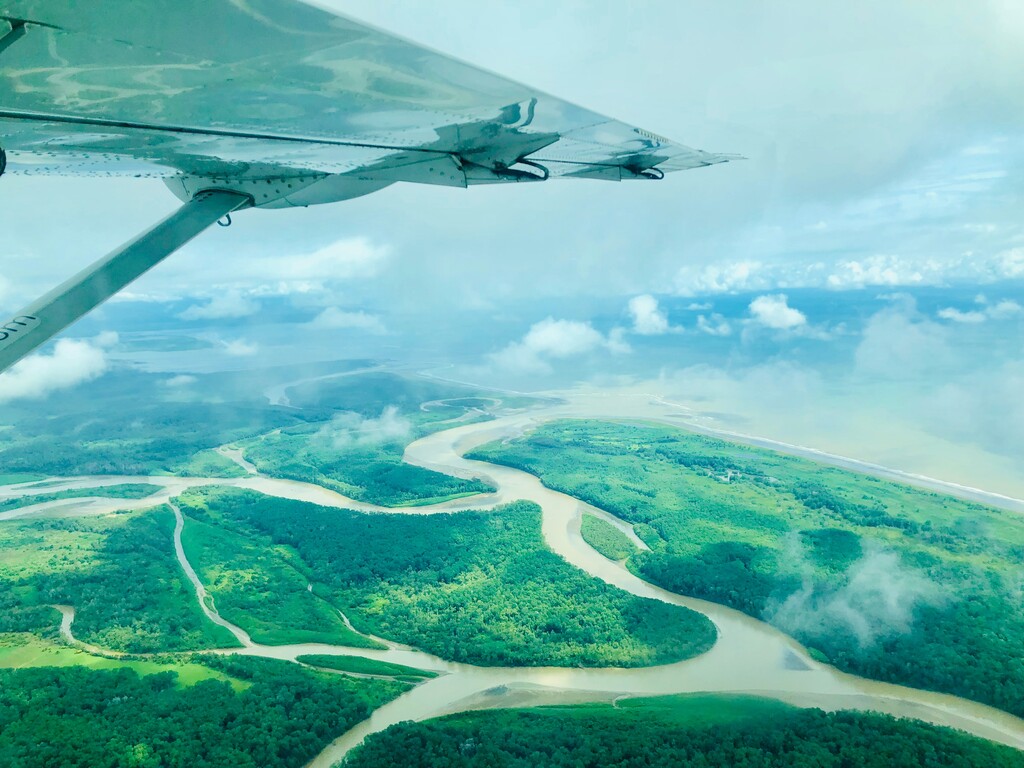
- Location: Costa Rica is in Central America, bordered by Nicaragua to the north, Panama to the south, the Pacific Ocean to the west, and the Caribbean Sea to the east.
- Population: Costa Rica is home to about 5.2 million people.
- Infrastructure: In Costa Rica’s urban areas, the infrastructure is well-developed, with international airports, hospitals, schools, and an increasing number of co-working spaces. Rural areas, however, can have more limited infrastructure, especially when it comes to roads and healthcare.
- Languages spoken: Spanish is the official language, but English is widely spoken in tourist areas and by many locals, especially those working in tourism.
What makes it special?
For eco-conscious families, Costa Rica is the ultimate digital nomad family destination. It’s known for its rainforests, beaches, and volcanoes, along with a strong commitment to sustainability and conservation. The tropical climate brings warm weather all year, and if your family loves outdoor adventures, this is the ideal place for you!
How safe is Costa Rica?
Costa Rica is generally safe, especially in tourist areas. Petty crimes like pickpocketing can happen, and road conditions in rural areas can be tricky. However, Costa Rica has a strong healthcare system, especially in cities like San José.
Cost of Living in Costa Rica
Families can live comfortably for $3,000 to $4,500 per month. Rent for a family home ranges from $1,300 to $2,000. Local food is affordable at around $5 per meal. Monthly groceries typically cost around $400 for a family.
Education in Costa Rica
Costa Rica has a number of international schools, particularly in San José. Schools like Country Day School and Blue Valley School offer American-style education and bilingual programs. These schools are well-established and popular with expat families.
Visa Options
Costa Rica offers a Temporary Residency Visa for families, and for remote workers, the Digital Nomad Visa allows stays of up to two years. The process is simple, and you can find more information in my comprehensive guide.
13. Copenhagen, Denmark
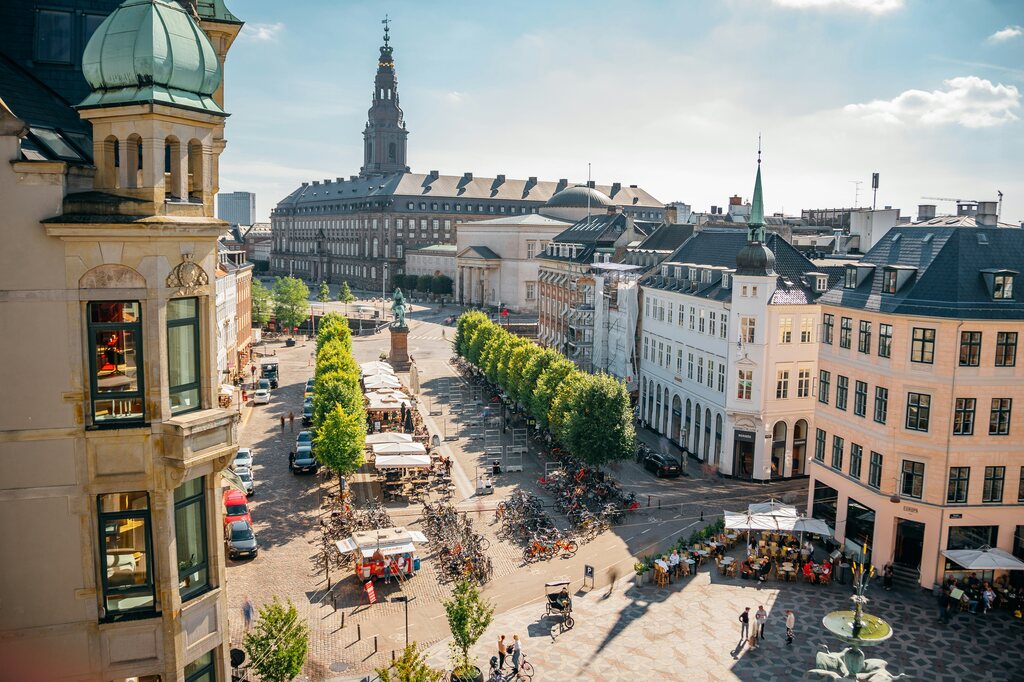
- Location: Copenhagen is Denmark’s capital, located on the eastern coast of Zealand, along the Øresund Strait.
- Population: About 800,000 people live in the city and 1.3 million in the greater metropolitan area.
- Infrastructure: Copenhagen’s infrastructure is top-notch, with a modern public transport system (metro, buses, trains), an international airport, hospitals, universities, and many co-working spaces. It’s also a famously bike-friendly city with extensive cycling lanes.
- Languages spoken: Danish is the official language, but many locals are fluent in English, so language barriers are rarely a problem.
What makes it special?
Copenhagen’s high quality of life, safety, and excellent public services make it a top-notch digital nomad family destination in Europe. Summer is cool, and while winter can bring some snow, it’s never too cold to enjoy being outside.
The city has a nice blend of modern design and historic sites, with castles and charming old streets to explore.
How safe is Copenhagen?
Copenhagen is one of the safest cities in the world, with a crime index under 30. Violent crime is almost unheard of, and families feel very secure living here. Healthcare and public services are also excellent.
Cost of Living in Copenhagen
For families, the cost of living ranges from $6,000 to $8,500 per month. Rent for a family apartment is between $3,500 and $4,500. Dining out is expensive, with meals costing $20–$30 per person. Groceries are also pricey, with a family spending around $800 per month.
Education in Copenhagen
Copenhagen offers top international schools like Copenhagen International School and Rygaards School. These schools provide education in English and follow the International Baccalaureate (IB) or British curriculum, with many offering bilingual programs.
Visa Options
Entrepreneurial families can apply for the Start-Up Denmark Visa, a great option for those starting a business. For more information, visit www.nyidanmark.dk.
14. Buenos Aires, Argentina
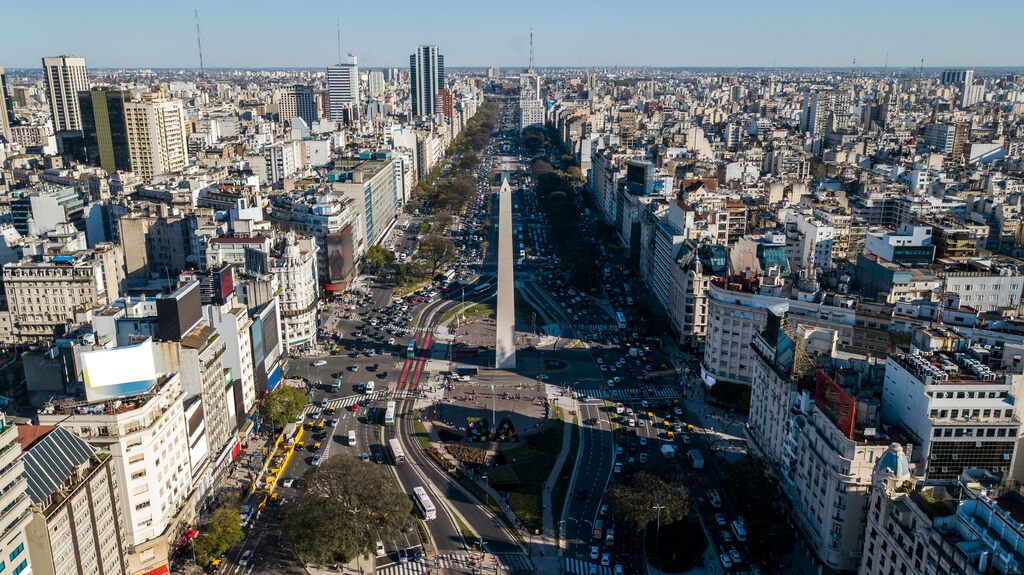
- Location: Buenos Aires, Argentina’s capital and largest city, is located on the southeastern coast of South America, along the Río de la Plata estuary.
- Population: The city itself has about 3 million people, but the greater metropolitan area is home to over 15 million.
- Infrastructure: Buenos Aires has excellent infrastructure, with a metro system (the Subte), buses, an international airport, hospitals, universities, and plenty of co-working spaces. It’s a major cultural and economic hub in Latin America.
- Languages spoken: Spanish is the official language, but English is widely spoken in tourist areas. You’ll also hear Portuguese and Italian among certain communities.
What makes it special?
Buenos Aires has a European flair, with its wide streets, cozy cafes, and beautiful old buildings, making it a wonderful digital nomad family destination. The city is lively and cultural, with tango dancing and music filling the air.
The weather is mostly warm, and families enjoy the city’s many parks and green spaces, like the stunning Bosques de Palermo.
How safe is Buenos Aires?
The crime rate is moderate, with petty theft being the main concern in crowded areas. However, violent crime is rare in tourist-friendly neighborhoods. Buenos Aires has a solid healthcare system, especially in private clinics.
Cost of Living in Buenos Aires
Families living in Buenos Aires spend between $2,000 and $3,500 per month. Rent for a family apartment is around $2,500 to $3,500. Local meals are affordable, costing $5–$10 at restaurants. Groceries for a family cost about $300 to $400 per month.
Education in Buenos Aires
Buenos Aires offers several international schools for expats, including St. George’s College and Buenos Aires International Christian Academy. These schools follow American or British curricula and provide bilingual education.
Visa Options
Argentina offers a Temporary Residence Visa for families and a Digital Nomad Visa for remote workers. Both visas allow stays of up to a year, with the option to renew. Learn more at www.argentina.gob.ar.
15. Singapore
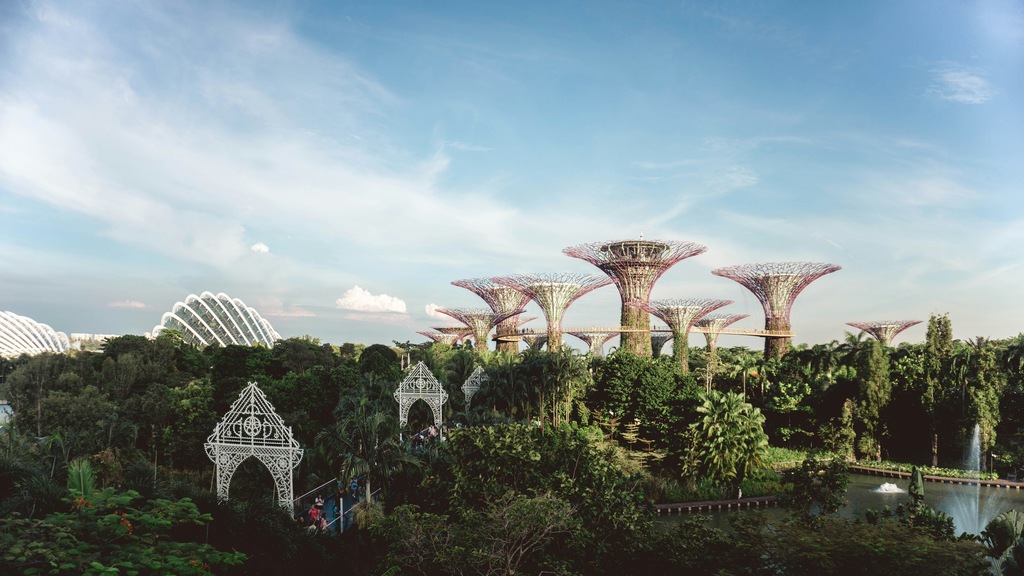
- Location: Singapore is a city-state in Southeast Asia, situated off the southern tip of the Malay Peninsula.
- Population: Singapore has around 5.6 million residents.
- Infrastructure: Singapore boasts world-class infrastructure, including a highly efficient public transport system (MRT, buses), Changi International Airport, top hospitals, universities, and a strong network of co-working spaces. The city is famous for its urban planning and connectivity.
- Languages spoken: English, Mandarin, Malay, and Tamil are Singapore’s official languages, with English being the most commonly spoken in business and government affairs. Many residents are bilingual.
What makes it special?
Singapore is warm and tropical, with towering skyscrapers balanced by green spaces like Gardens by the Bay. It’s incredibly clean and safe, with a rich mix of cultures—Chinese, Malay, Indian, and Western. Singapore is easily one of the best digital nomad family destinations in Asia, but be prepared to spend so much more.
How safe is Singapore?
Singapore is one of the safest places in the world, with very low crime rates thanks to its strict laws. Petty crime is rare, and the city has excellent healthcare.
Cost of Living in Singapore
Families should expect to spend between $10,000 and $15,000 per month. Rent for a family apartment ranges from $5,000 to $8,500.
Local hawker centers offer affordable meals at $5–$8 per dish. However, dining at Western-style restaurants is more expensive, with meals costing $20–$30 per person. Groceries for a family typically cost around $1,000 per month.
Education in Singapore
Singapore is home to some of the world’s best international schools, such as Singapore American School and Tanglin Trust School. These schools offer American, British, and International Baccalaureate (IB) programs and are known for their high academic standards and superb facilities.
Visa Options
Families can apply for the Dependent’s Pass, which allows family members of working expats to live in Singapore. Entrepreneurs can apply for the EntrePass to move their family to Singapore. More details can be found at www.ica.gov.sg.
Final Thoughts on the Best Destinations for Digital Nomad Families
Feeling a bit overwhelmed? I get it! With so many incredible places to choose from, it can be hard to decide. The good news? No matter where you go, each of these digital nomad family destinations offers something special. It’s good to have backup plans and an emergency fund to quickly find a new place in case you’re unhappy with your decision.
We’re a “slowmad” digital nomad family, and I really recommend sticking to one region and exploring all the nearby hubs first. For example, we’re currently in Southeast Asia and have already lived in places like Koh Phangan, Chiang Mai, Bali, Singapore, and Auckland with our family. Next, we’re planning to explore new destinations in Central and South America.
I hope this gave you a good overview! Do you have any questions? What’s your next digital nomad family destination?
Thanks so much for reading and for making me a part of your day!
Yours, Lulu









